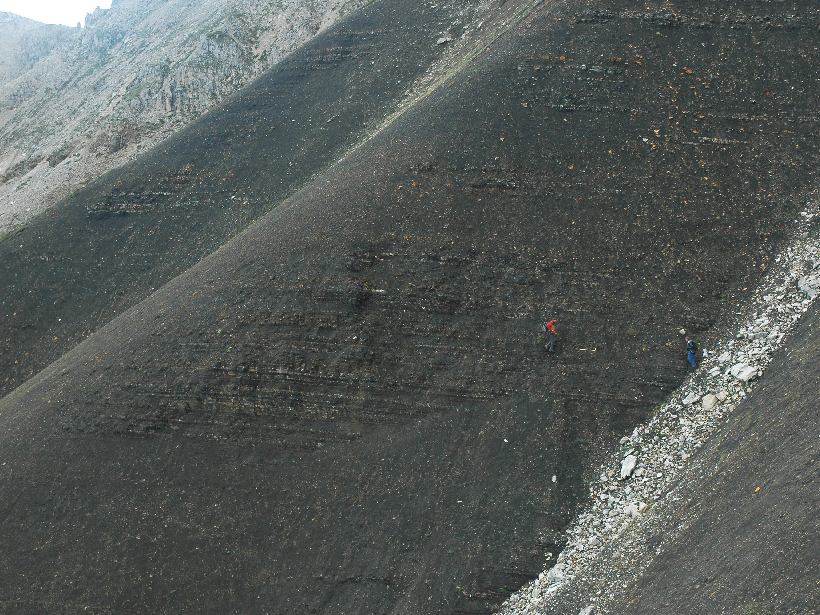Source: Geochemistry, Geophysics, Geosystems
Iron is the most abundant transition metal in Earth’s crust—occurring in a wide variety of minerals and in multiple oxidation states, mainly ferrous, or +2, and ferric, or +3—and its presence in different forms in rocks can tell vivid stories about ancient environmental conditions on the planet, such as past nutrient cycling, geologic activity, and oxygen contents.
In recent decades, scientists have probed iron content and speciation in rock samples with a laboratory technique that uses different chemicals to sequentially dissolve, or extract, specific types of iron. First, acetate is used to dissolve iron in carbonates, then hydroxylamine hydrochloride is used for easily reducible oxyhydroxides, then dithionite for ferric iron (oxyhydr)oxides like goethite, and finally, oxalate for magnetite.
In a new study, Slotznick et al. report on magnetic experiments and X-ray diffraction measurements of samples dating from 1.5 billion years ago in the Precambrian up through the Holocene to check just how accurate the assignment of minerals associated with the sequential extraction process actually is. They found that for some steps, especially the one involving dithionite, the technique worked as expected; in other words, dithionite dissolved the target ferric iron (oxyhydr)oxides efficiently while leaving other forms of iron untouched. For other steps, though—especially the final step in which oxalate is used to dissolve magnetite—the researchers discovered that the process did not work as expected. They suggest that in this last step, oxalate was dissolving iron bound in clays rather than just iron in magnetite.
The researchers say their data indicate that the extraction technique is more complex than previously assumed. Overall, the magnetic and X-ray diffraction analyses suggested that dissolution of iron phases was more gradual than realized, with undissolved portions of minerals from previous steps lingering and with slow dissolution of iron outside the intended targets. Part of the complication, the scientists say, is that rock samples can be extremely heterogeneous and variables like composition, grain size, and crystallinity can create differences that affect how iron dissolves.
The team’s analysis of a large data compilation highlighted that Precambrian sedimentary rocks contain more iron that is dissolved by oxalate (and thus they potentially contain more of certain iron-bearing clays) than Phanerozoic sedimentary rocks. The researchers say this observation suggests that a significant shift in iron cycling occurred between these two time periods. (Geochemistry, Geophysics, Geosystems, https://doi.org/10.1029/2019GC008666, 2020)
—David Shultz, Science Writer
27 March 2020: This article has been updated to clarify the types of metals found in the crust.
Citation:
Shultz, D. (2020), Review of go-to iron analysis method reveals its pros and cons, Eos, 101, https://doi.org/10.1029/2020EO141919. Published on 27 March 2020.
Text © 2020. AGU. CC BY-NC-ND 3.0
Except where otherwise noted, images are subject to copyright. Any reuse without express permission from the copyright owner is prohibited.

